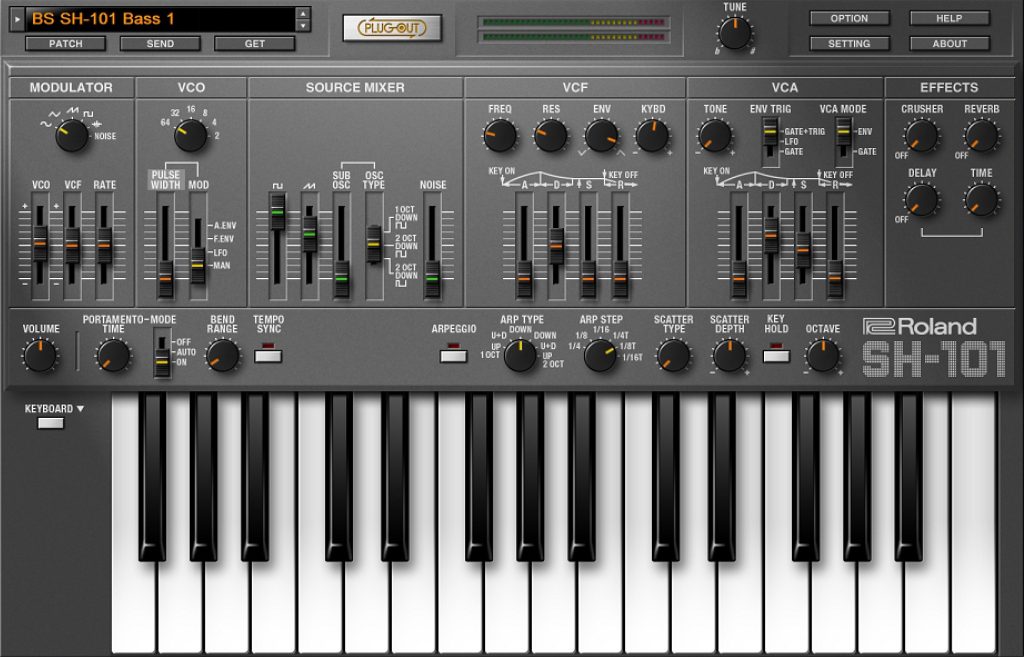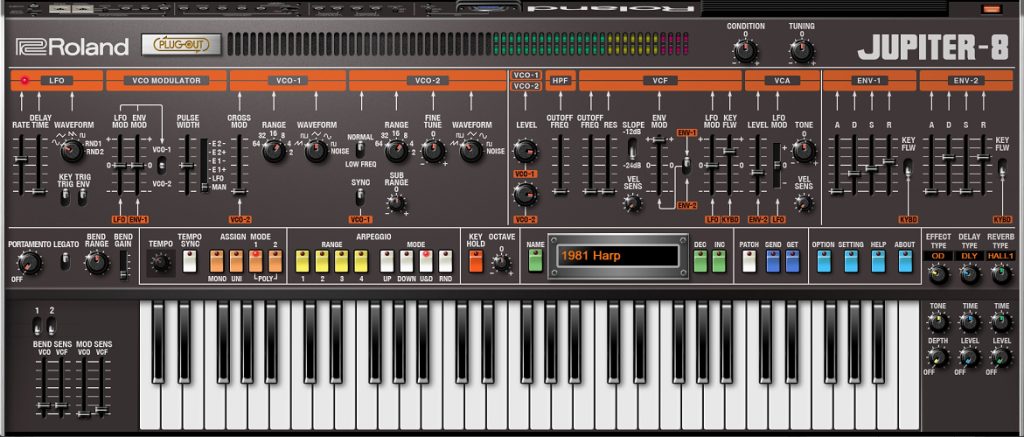Solana Imani Rowe, better known as SZA, has been a force in modern R&B music since her major label debut, 2017’s Ctrl. However, the New Jersey-raised singer started making waves on the internet as early as 2012 with her self-released EP See.SZA.Run. In addition to her 2022 Grammy for “Kiss Me More” with Doja Cat, SZA has won awards from BET, Billboard, and MTV. The innovative artist mixes neo-soul, R&B, trap, hip-hop, and pop into a unique brew. Learn to use Roland Cloud instruments to create a track in the artist’s signature style.
A Path Paved with Platinum
SZA has a career filled with dramatic achievements. After catching the attention of the burgeoning hip-hop label, Top Dawg Entertainment, SZA collaborated with Isiah Rashad, Schoolboy Q, Chance the Rapper, and Kendrick Lamar. In 2016, she co-wrote the hit “Feeling Myself” by Beyonce and Nicki Minaj and was the featured vocalist on Rihanna’s platinum-selling album Anti. Her debut album, Ctrl, was certified triple platinum and became the second-longest charting R&B album by a female artist in Billboard history.
"SZA's debut album, Ctrl, was certified triple platinum and became the second-longest charting R&B album by a female artist in Billboard history."
Sending Out an SOS
With all her accolades, the pressure for her sophomore album was high. However, SZA didn’t succumb to constant calls from anxious fans and put out a rushed or half-hearted project. She instead spent five years growing as an artist and songwriter before releasing SOS. The album exceeded the expectations of her fans, landing her the number-one spot on the Billboard charts for ten non-consecutive weeks.
The music world appreciates SZA’s artistry and songwriting. In addition, SZA has an exceptional ear for producers, collaborating with Darkchild, The Neptunes, ThankGod4Cody, Tyler the Creator, and her in-house team of Carter Lang, Tyler “Scum” Donaldson, and engineer/producer Rob Bisel.
Influences
SZA’s musical inspiration ranges from Bjork to Lauryn Hill. She’s also cited artists such as Red Hot Chili Peppers, Ella Fitzgerald, LFO, Wu-Tang Clan, Nas, and Ashanti as influences. Although SZA prefers not to label her style, critics credit her as a pioneer of Alternative R&B, more of an aesthetic genre than one with strict rules. Keeping with her eclectic vibe, a rich tapestry of influences is all over SOS. Learn to create a track in the style of SZA’s “Seek and Destroy,” using Roland Cloud.
Building the Track
Chords and Melody
The first thing to consider when approaching this track is melody and harmony. SZA’s songs feature R&B and neo-soul style production and harmonic structures. SZA is also known for rhythmic and melodically rich verses and hooks. To that end, the instrumental melody in this SZA-style track accompanies and complements the main vocal melodies. Inspiration comes from SZA’s track “I Hate You,” which starts with a central melodic line played by a synth. The three-note melodic theme consists of G, Bb, and Ab, while the chords embellish this melody and provide a solid harmonic structure.
All the chords revolve around the note G since this note repeats twice in the melody. The G note becomes either an important chord tone or upper extension of each chord in the progression: Ab major 7 (the 7th), F minor 9 (the 9), Eb major 7 (the 3rd), and Db7#11 (the #11). Use the “PL Pluck Piano” preset on the JUNO-106 to create a patch to recreate the main melody and harmony.

Drums
After the melodic loops are in place, add a drum break from the ’70s Soul Sample Pack. This drum break features a live drum sample and a drum fill at the end of the loop. Adding delay automation to the groove can achieve a similar texture to the drums on “Seek and Destroy.” Using drum breaks is a great way to find a groove for a track instantly. Roland Cloud has a wide range of Sound Packs for more drum loops.
"Many SZA tracks have only a few sonic elements, so each part must add depth and character without overpowering the other ingredients."
Bass
After establishing the harmony and groove, the next step is to add bass. An excellent choice for bass in Roland Cloud is the SH-101. For this bassline, use the “BS SH-101 Bass 1” patch. The bassline is straightforward and leaves ample space, as the drums and melody already carry a lot of sonic weight. Many of SZA’s tracks have only a few sonic elements, so each part must add depth and character without overpowering the other ingredients. This lean approach allows her vocals to shine through and take center stage.

Extra Elements
With the bass, drums, and harmony in place, we can add extra elements. The acapella version of “Seek and Destroy,” pitched down to work with this harmony, provided the initial inspiration for this track. A second piano part using the “1981 Harp” patch for the JUPITER-8 adds pulsing quarter-note chordal accompaniment. Since the JUNO-106 part combines chords and melody, this figure is a nice contrast. At specific points, the chords become more arpeggiated. This shift gives the track a new character, making the bridge sound unique without a harmonic change.

Adding the SH-101 “SY 80’s Bell” at certain points creates a glissando effect. Accentuate this part by turning up the delay and reverb parameters. Many of the tracks on SOS have a nostalgic vibe, and more synth presence can achieve that feel. Try adding a lead sound using the JUPITER-8 “Jupiter Glide” preset.
"Removing drums and the main JUNO-106 melody will make room for the vocals while allowing the listener to feel the presence of the SH-101 bass."
Arrangement Options
With all the parts in place, there are many arrangement choices. Starting the track without drums, like “Seek and Destroy,” is one option, but the drums can also stay in from the beginning. Try muting the drums and main JUNO melody at specific points. Their absence will gives more room for the vocals to cut through while allowing the listener to feel the presence of the SH-101 bass.
The “1981 Harp” sound can arrive with the hook and stay prominent on the bridge. Being able to arrange the various elements of a track turns a simple loop into a song. The possibilities are endless, so experiment with these pieces to create a unique version.






